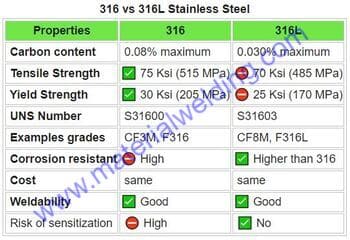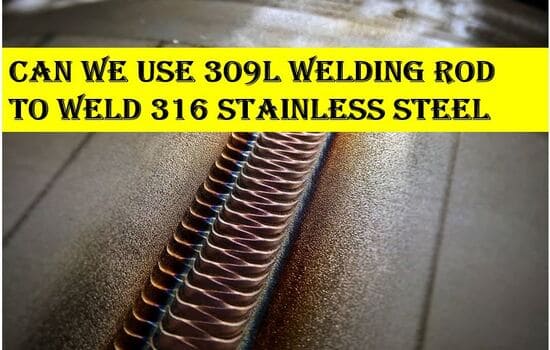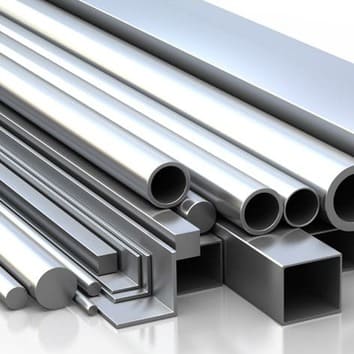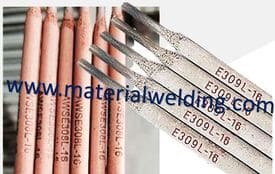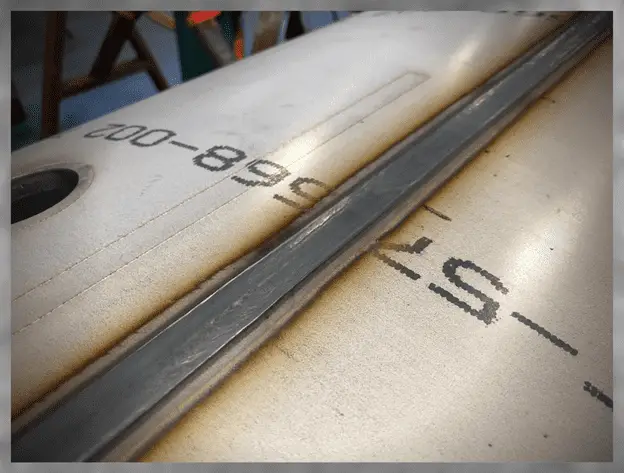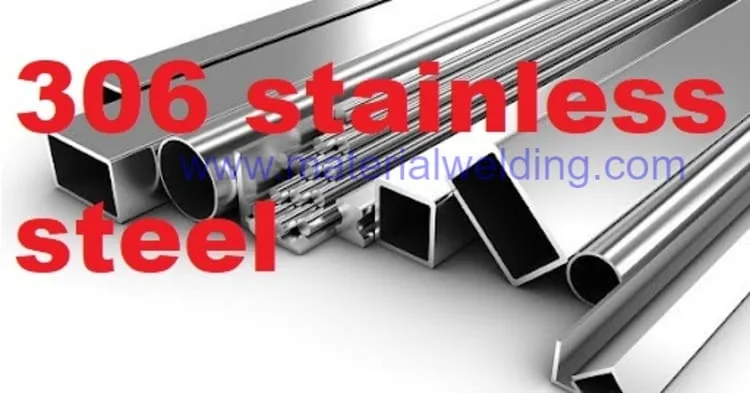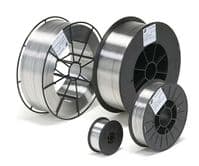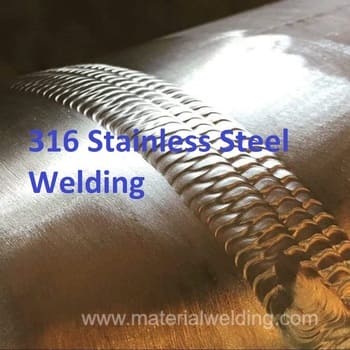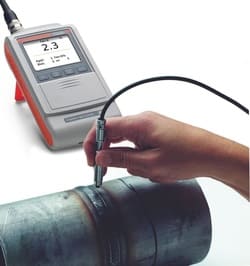Welding 316L Stainless Steel
Welding 316L Stainless Steel is not as difficult as it might seem at first. As long as you have a good welding rod and you control the heat, you should be able to weld it with no problem.
One of the benefits of welding 316L stainless steel is that it has good weldability. This means that it is easy to weld and doesn’t require a lot of special training or equipment.
316L Material Specification & UNS Number
316L is the low carbon version of 316 stainless steel. It is an austenitic chromium-nickel alloy with added molybdenum which gives it improved corrosion resistance. This is especially true in pitting and crevice corrosion in chloride environments.
Related reading: The Properties of 316 and 316L Stainless Steel Explained
316L is non-magnetic in the annealed condition but can become slightly magnetic as a result of cold working or welding.
It has a density of 0.29 lb/in³ (8 g/cm³) and its modulus of elasticity is 29 x 10^6 psi (200 GPa). Its melting point is 2500°F (1370°C).
The UNS number for 316L stainless steel is UNS S31603. ASME Section IX Welding P Number for 316L is P Number 8 and group Number 1.
The main material specifications for 316L material are:
- ASTM A 182 (for forging)
- ASTM A 213 (for seamless tubes)
- ASTM A 240 (for plate, bar strips)
- ASTM A 249 (for welded tubes)
- ASTM A 276 (for bars & shapes)
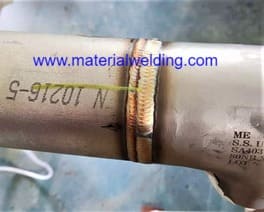
316L Chemical composition
316L is an austenitic chromium-nickel alloy with a low carbon content. It has good corrosion resistance in a wide range of chemicals, especially in acidic environments. It is also resistant to pitting and crevice corrosion.
The chemical composition of 316 & 316L stainless steel is:
| Grade | 316 | 316L |
| Element | Weight % | Weight % |
| Carbon | 0.08 | 0.030 |
| Manganese | 2.00 | 2.00 |
| Silicon | 0.75 | 0.75 |
| Chromium | 16 -18 | 16 -18 |
| Nickel | 10- 14 | 10- 14 |
| Molybdenum | 2.0- 3.0 | 2.0- 3.0 |
| Nitrogen | 0.10 | 0.10 |
| Sulfur | 0.30 | 0.30 |
| Phosphorus | 0.045 | 0.045 |
316L Mechanical properties
It is widely used in chemical process plants because of its superior corrosion resistance to pitting and crevice corrosion.
Tensile strength, yield strength, and elongation are important mechanical properties to consider when selecting 316L for an application. Ultimate tensile strength for Type 316 and 316L steels are obtained by performing a tension test on specimens from each type of steel.
Yield strength is determined by the 0.2% offset method. Elongation values are derived from the reduction in cross-sectional area of the specimen during the tension test.
Mechanical properties of Grade 316 and 316L are given in the below table.
| Grade | AISI 316 | AISI 316L |
| Yield Strength, Minimum | 30 Ksi (205 MPa) | 25 Ksi (170 MPa) |
| Tensile Strength, Minimum | 75 Ksi (515 MPa) | 70 Ksi (485 MPa) |
| Elongation, min% | 40 | 40 |
| Hardness, Maximum | 217 HBW (95HRBW) | 217 HBW (95HRBW) |
| Thermal Conductivity | 21.5 W/m·K @ 500 °C/ 932 °F | 21.5 W/m·K @ 500 °C/ 932 °F |
| Thermal Expansion | 17.5 µm/m/°C | 17.5 µm/m/°C |
| Density | 8g/cm3 | 8g/cm3 |
| Young Modulus | 193 GPa | 193 GPa |
| Melting Temperature | 2500 to 2590 °F (1371 to 1421 °C) | 2500 to 2590 °F (1371 to 1421 °C) |
316L welding Filler wire rod
316L welding filler wire rod is a common type of austenitic stainless steel used in the welding of 316L base metals. The ‘L’ in 316L stands for Low Carbon, which is required for welding applications.
ER316L is a common type of austenitic stainless steel used for welding 316L stainless steel base metals with TIG & MIG Welding. It has a higher molybdenum (2- 3%) content than ER308L (0.75% max.), giving it higher pitting corrosion resistance. ER316LSi is a silicon-modified version of ER316L that gives good weld pool fluidity for welding 316L stainless steel.
Welding 316L to Carbon steel
Welding 316L stainless steel to Carbon steel can be done with ease. The main thing you need to know is the right welding rod to use.
For this type of weld, you will need a welding rod with high amount of Nickel & Chromium to compensate these element losses that can take place if welded with a carbon steel rod.
Welding 316L to Carbon steel can be carried out using any of the following welding rod/ filler wires:
- E309L-16 (Stick Welding-SMAW Rod)
- ENiCrFe-2 (Stick Welding-SMAW Rod)
- ENiCrFe-3 (Stick Welding-SMAW Rod)
- ERNiCr-3 (TIG-MIG Filler wire rod)
- ER309L (TIG-MIG Filler wire rod)
- ER309LSi (TIG-MIG Filler wire rod)
You also need to know the correct welding techniques to avoid any problems. Welding 316L stainless steel to Carbon steel shall be carried out using stringer beads to avoid high dilution rate.
A good rule of thumb is to use an amperage that is 25% less than what is recommended for welding mild steel.
Welding 316L to mild steel
Welding 316L to mild steel can be accomplished using various welding methods. The most common method is stick welding with 309LMo filler rod. This rod is ER309LMo and is used for TIG and MIG welding of austenitic stainless steels. It has a low carbon content, which makes it ideal for welding 316L to mild steel.
Welding guidelines given above for Welding 316L stainless steel to Carbon steel applied to 316L welding to mild steel also.
Welding 316L to 304L
Welding 316L to 304L can be achieved through various methods. The most common methods are TIG welding with ER316L and stick welding with E316L-16 welding rod.
TIG welding with ER316L/ ER316LSi is the most common method used to weld 316L to 304L. You can also use ER308L/ ER308LSi for welding 316L to 304L.
Stick welding with E316L-16 & E308L-16 is another common method used for Welding 316L stainless steel to 304L. In summary, you can use following welding rods/ filler wire for welding 316L to 304L:
- E316L-16
- E308L-16
- ER308L/ ER308LSi
- ER316L/ ER316LSi
Welding 316L to 2205 Duplex Stainless Steel
Welding 316L to 2205 can be done using stick welding (SMAW), TIG Welding and MIG welding. Stick welding of 316L to 2205 is carried out using:
- E2209-16 smaw rod or ER2209 Tig/ MIG filler wire rod
- E309LMo-16 smaw rod or ER309L/ ER309LSi- Tig/ MIG filler wire rod
Pure argon gas is required for weld shielding & weld purging for Welding 316L stainless steel to 2205 DSS. Purging must be provided to avoid the oxidation and maintain alloy corrosion resistance.
Welding 316L to 904L
Welding 316L to 904L is carried out using ENiCrMo-10 or ENiCrMo-14 stick welding rod. TIG or MIG welding of 316L to 904L is carried out using ERNiCrMo-10 or ERNiCrMo-14 type filler wire rod.
Pure argon gas is required for weld shielding & weld purging. Purging must be provided to avoid the oxidation and maintain alloy corrosion resistance during welding of Welding 316L stainless steel to other materials.
Welding 316L with 308L wire
Welding of 316L with 308L wire is not a general practice as 308L contains less chromium compared to 316L alloy.
308L welding wire rod is for welding of 304L alloy and also used for welding of 304L to 316L. But it should not be used for welding 316L to itself but instead only used for welding of 304L to 316L.
Welding 316L to 316Ti
Welding of 316L stainless steel to 316LTi can be carried out using ER316LSi or E316L-16 welding rod.
Use pure argon gas for weld shielding when welding with TIG and MIG welding. Small amount of helium are sometime added when welding thicker materials.
